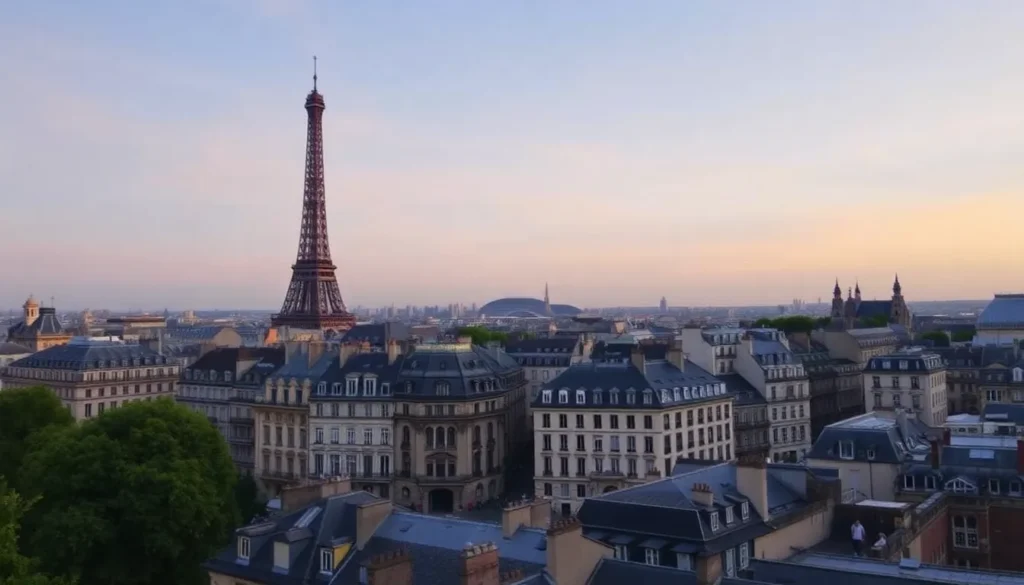Bohemian Itinerary in Paris

Imagine wandering through the vibrant streets of Paris, where the echoes of artists and poets from the past still resonate. Although the bohemian Paris of the late 1800s has largely faded, with a sprinkle of imagination and the right guidance, you can capture a glimpse of that artistic spirit. Get ready to embark on a bohemian journey through one of Europe's most enchanting cities!
- Understanding the Bohemian Lifestyle: What, Who, and How?
- Strolling Through Montmartre: The Heart of Bohemian Paris
- Cafés with Literary Legacies: Where Art and Inspiration Meet
- The Allure of Absinthe: A Drink of Inspiration
- Essential Items for Your Bohemian Itinerary
- Discover Montmartre: A Treasure Trove of Artistic Gems
- How to Reach Montmartre: Navigating Paris
- Family-Friendly Activities in Montmartre
Understanding the Bohemian Lifestyle: What, Who, and How?
The term bohème refers to a unique lifestyle embraced by many artists, poets, and musicians who sought to live life as a form of art. This lifestyle was often marked by a romanticized view of existence, intertwined with vices and nocturnal escapades. Think absinthe, cabarets, and untamed creativity.
Notable figures such as Rimbaud, Baudelaire, Verlaine, Van Gogh, Satie, Courbet, and Picasso epitomized this lifestyle. Henri Murger perfectly captured the essence of the bohemians when he said: “They are a race of obstinate dreamers for whom art is a faith, not a job.” This sentiment continues to inspire those who wander through the streets of Montmartre today.
Strolling Through Montmartre: The Heart of Bohemian Paris
Montmartre was the epicenter of the bohemian revolution, and while it attracts countless tourists today, the early morning hours offer a chance to feel the echoes of early 1900s Paris. To truly experience its charm, rise early!
The Montmartre at dawn presents a scene devoid of bustling crowds, allowing you to imagine a time drenched in art, emotion, and excess. Without the distractions of modern life, it's easy to envision yourself amidst the vibrant artistic community of the past.
This district is characterized by its narrow streets, quaint stairways, trees, windmills, and charming facades that whisper stories of their own. Each corner you turn feels like stepping back in time.
As the day progresses, don’t miss the Musee de Montmartre (13 Rue Cortot), which offers a wealth of historical insights into this iconic neighborhood, unveiling its connections to cabarets, the Commune, and the notorious poets who once roamed its streets.
A visit to the Place du Tertre is a must. This lively square, known for its artists, serves as a gathering spot for modern-day bohemians (often referred to as hipsters) who prefer craft beer over absinthe. A free walking tour can further enrich your experience, guiding you through the district's hidden gems.
Cafés with Literary Legacies: Where Art and Inspiration Meet
Scattered throughout Montmartre and Montparnasse are many literary cafés that witnessed the birth of countless masterpieces by renowned artists such as Paul Verlaine, Baudelaire, Apollinaire, Hemingway, and Picasso. Here are some iconic spots:
- Le Procope (Rue de l’ancienne Comédie): Established in 1684, it is one of the oldest cafés in Europe and hosted numerous famous bohemians.
- Closerie des Lilas (171 Boulevard du Montparnasse): A favorite haunt of Baudelaire, Verlaine, and Hemingway.
- La Rotonde (105 Boulevard du Montparnasse): Once a meeting point for contributors to the magazine “Les Soirees de Paris,” founded by Apollinaire. Interestingly, artists who couldn't pay their bill sometimes exchanged poems or drawings instead.
- Café de Flore (172 Boulevard Saint-Germain): Famous for its Art Deco style, it was a significant spot for Apollinaire and his contemporaries.
- Le Café de la Paix (5 Place de l’Opéra): This café was Oscar Wilde's preferred writing retreat.
- Chat Noir: A legendary venue frequented by Guy de Maupassant, Renoir, Victor Hugo, and Degas.
The Allure of Absinthe: A Drink of Inspiration
No discussion of the bohemian lifestyle is complete without mentioning absinthe. This potent spirit, derived from the flowers and leaves of artemisia absinthium, was infused with anise flavor and believed to inspire creativity.
Originally from Switzerland, absinthe gained fame through its association with the Moulin Rouge, where it was touted for its hallucinogenic and aphrodisiac effects. By the early 1900s, France consumed a staggering 36 million liters annually!
The “green fairy,” as absinthe is affectionately known, fueled the imaginations of many artists. It was banned in 1915 but made a comeback in 1988, making it possible for curious travelers to experience its unique flavor once again.
Wondering how to savor absinthe? The traditional method involves placing a perforated spoon over a glass of absinthe, adding a sugar cube, and slowly drizzling ice-cold water over it.
Here are some recommended places to enjoy absinthe in Paris:
- La Fée Verte: 108, rue de la Roquette. Metro: Bastille.
- Les Furieux: 74, rue de la Roquette. Metro: Bastille.
- Vert d’absinthe: 11, rue d’Ormesson. Metro: Saint-Paul.
- Le Fumoir: 6, rue de l’Amiral de Coligny. Metro: Louvre – Rivoli.
Essential Items for Your Bohemian Itinerary
- A bohemian book (how about “Les Fleurs Du Mal”?).
- A notebook (you never know when inspiration will strike!).
- Embrace the spirit of a tortured poet (who knows, you might even find romance!).
Feeling inspired to explore the bohemian side of Paris? This unique itinerary promises an enriching and unforgettable experience, perfect for spending a day in the City of Light.
To further immerse yourself in the magic of Montmartre, check out this video that captures its essence:
Discover Montmartre: A Treasure Trove of Artistic Gems
While Montmartre is widely celebrated for its artistic heritage, there are many lesser-known attractions that are equally enchanting. Explore hidden gardens, quaint shops, and intimate galleries that showcase the work of contemporary artists inspired by the same spirit that once thrived here.
Consider visiting:
- The Wall of Love: A beautiful mural featuring the phrase “I love you” in over 300 languages.
- Dalí Paris: A museum dedicated to the works of surrealist artist Salvador Dalí.
- Le Bateau-Lavoir: A historical artist residence where many famous creatives, including Picasso, lived and worked.
Reaching Montmartre is easy thanks to Paris's efficient public transportation system. The closest metro station is Anvers (Line 2), and from there, it’s a short walk up the hill. Alternatively, you can take the funicular for a more scenic ascent.
Once there, allow yourself to get lost in the neighborhood's enchanting streets. Each turn reveals artistic surprises and delightful cafés that invite you to sit and soak in the atmosphere.
Family-Friendly Activities in Montmartre
Traveling with children? Montmartre also offers family-friendly attractions that allow younger visitors to appreciate its artistic legacy. Consider these activities:
- Visit the Espace Dalí: An interactive space featuring sculptures and paintings that engage the imagination.
- Take a family-friendly art workshop: Many local studios offer classes designed for kids and families.
- Explore the Sacré-Cœur Basilica: The stunning architecture and panoramic views are sure to captivate children and adults alike.
Montmartre's blend of history, art, and culture makes it a fascinating destination for anyone seeking to experience the bohemian spirit of Paris. From sipping absinthe in historic cafés to wandering through charming streets, every moment spent here is a step back in time.
Don’t forget to explore our other articles about Paris for more insights and tips on your travels!



Deja una respuesta